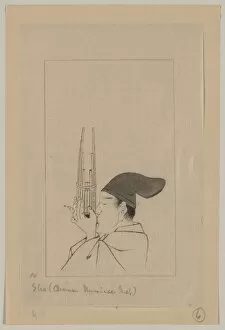Woodcuts Collection (page 59)
Woodcuts, a form of traditional Japanese art, have captivated audiences for centuries
All Professionally Made to Order for Quick Shipping
Woodcuts, a form of traditional Japanese art, have captivated audiences for centuries. These intricate prints tell stories and capture moments in time with their delicate lines and vibrant colors. One notable series is the "Seven gods of good luck, " which depicts these deities bringing fortune and prosperity to those who believe. Another famous woodcut is the pictorial envelope for Hokusai's "36 views of Mount Fuji" series. This masterpiece showcases iconic landscapes, including the awe-inspiring "The Great Wave off Shore of Kanagawa. " The towering wave crashes down on fishermen, reminding us of nature's power and our own insignificance. In contrast to this dramatic scene, there are peaceful woodcuts like "A Fairy Moon and a Lonely Shore. " Here, we see a tranquil moonlit beach that evokes feelings of serenity and solitude. Similarly calming is the depiction of Horikiri Iris Garden, where vibrant flowers bloom amidst lush greenery. It also honor historical figures such as samurai warriors Ichijo Jiro Tadanori and Notonokami Nori. Their fierce gazes convey strength and determination as they prepare for battle. Equally captivating is "Evening Glow at Koganei Bridge, " which captures a serene moment by the riverbank bathed in warm hues. Miyamoto Musashi, legendary swordsman and philosopher, comes alive through woodcuts that depict his skillful techniques in combat. Meanwhile, tales like "The First Tale of Ishikawa Goemon" transport us to an era filled with intrigue and adventure. Nature plays a significant role in many woodcuts; shellfish glisten under soft light while swallows soar against a summer-like moon backdrop adorned with peach blossoms. These scenes remind us to appreciate the beauty around us even in simple moments. Woodcuts continue to be cherished for their ability to transport viewers into different worlds through intricate details carved onto wooden blocks.

















